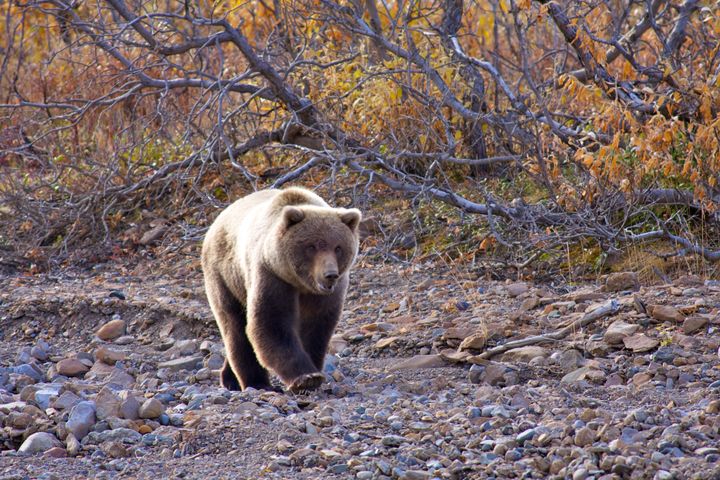
The sign is alarming: "CAUTION wolf traps set in the area near roads and trails. Please keep dogs leashed as they will be attracted to the traps and will be caught. Dogs will bite if approached in trap! If dog is caught place jacket over dog's head and compress springs on either side of trap by standing on them to release animal."
Produced by Idaho Department of Fish and Game, fair warning such as this is a smart move. Wolves are now allowed to be trapped in Idaho legally, traps pose a serious risk to our canine companions (and others), and these diabolical devices are frequently placed near roads and trails despite the risks to other outdoor enthusiasts.
The question is whether trapping should be allowed in places highly trafficked by humans and Canis familiaris. Born Free USA believes it's just not safe.
Animals captured in leghold traps endure fractures, ripped tendons, edema, amputations, and mouth damage (from biting at the trap). Depending on how long they are in the trap they may also suffer from dehydration, hypothermia, or starvation.
The prolonged pain and suffering that will be endured by trapped wolves was made clear at the close of Idaho's first-ever wolf trapping season last year when a Forest Service employee posted a photo of himself on the internet smiling in front of a wolf he trapped who was still alive surrounded by bloodied snow. The wolf was captured in the trap, then shot at by others and left to suffer while the trapper posed for a photo. Since Idaho regulations have no requirements on how trapped animals may be treated or killed, this situation was perfectly legal.
Suffering of trapped animals can be reduced and chances of survival for dogs and other non-target animals increased if traps are checked frequently - at least every 24 hours. Many states require that traps be checked at least once every 24 hours. Idaho's current trap check requirement is 72 hours. Leaving trapped animals to linger in pain and without access to food, water or shelter for three days is outrageous. In most states leaving a dog chained to a tree without food, water or shelter would violate anti-cruelty laws. But trap a wolf or other animals and leave them to suffer for three days is legal in Idaho.
Traps may be set five feet from the center line of any maintained public trail and just outside 300 feet designated public campgrounds, trailheads, and picnic areas. Posting warning signs about the presence of traps is also not required.
Warning the public about hidden traps is something that Born Free USA feels strongly about and that's why we just launched Safe Trails (www.bornfreeusa.org/safetrails
We receive hundreds of heartbreaking reports about cats and dogs injured or killed by traps and snares. We keep an online database of incidents to bring attention to this public safety issue. We also established the Born Free USA Trapping Victims Fund to assist with veterinary costs when companion animals are caught in traps.
Today, an increasing number of states are implementing regulations reduce the risks of indiscriminate body-gripping traps, we hope this trend continues. In the meantime we hope our efforts will protect individuals from enduring the emotional and financial strain of dealing with the loss or injury of their companion animals to the jaws of a trap.
Interesting and of note, not one media outlet in Idaho was willing to interview us for a piece about this. Denial?!
Enjoy the outdoors. Happy - and safe - trails!
Will Travers, CEO, Born Free USA
www.bornfreeusa.org/safetrails